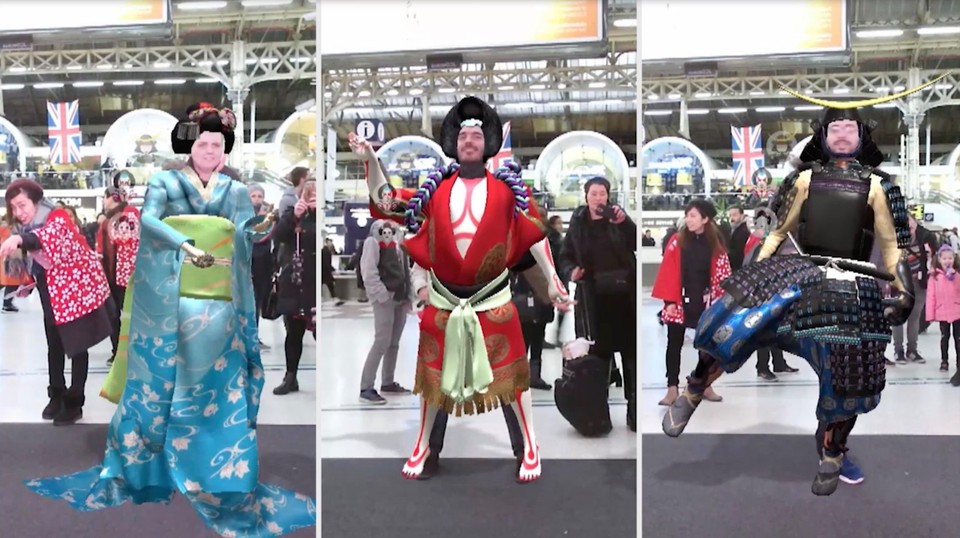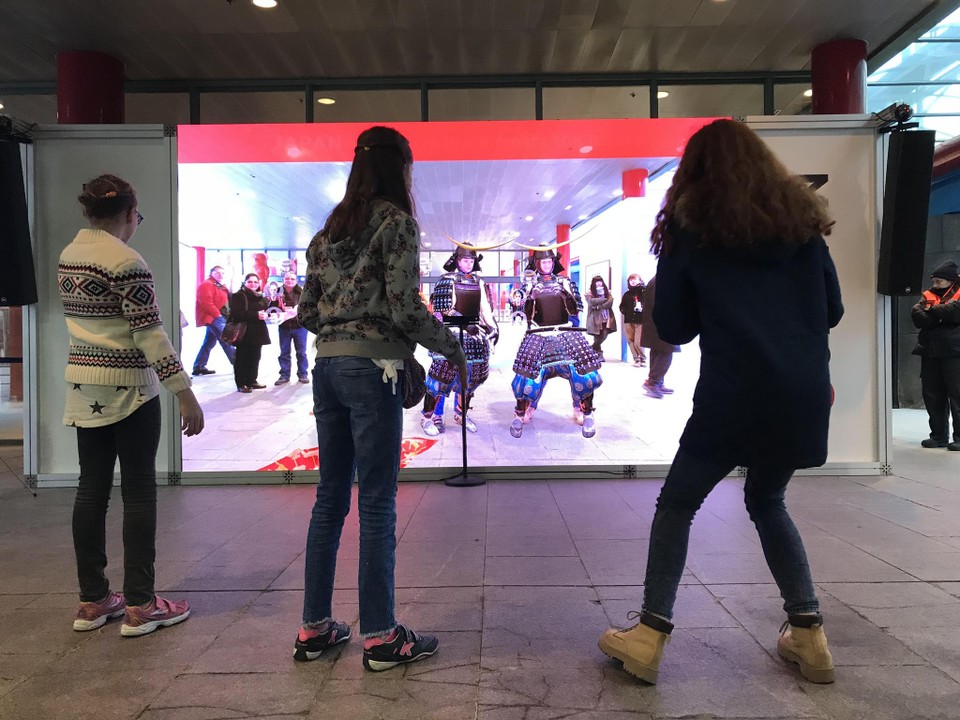Japan attracts travellers from all over the world. Among inbound Japan travellers, however, no European countries rank among the top 40. In fact, the number of European travellers to Japan are less than half those of China or even Thailand. Reasons include high travel costs, language barriers and the physical distance of over 10,000 kilometres (10 hours by plane). However, about 90% of Europeans who have visited Japan (spending about 2 weeks on average traveling throughout the country) are very satisfied and hope to return.
To increase the number of Europeans visiting the country, Japan’s National Tourism Organisation (JNTO) decided to give Europeans more opportunities to encounter Japanese culture.
Based on the concept “JAPAN – Where tradition meets the future”, the organisation held interactive events in which distant Japan came to five European countries: Spain, Germany, France, U.K. and Italy.

Visitors who stood in front of a huge LED screen would see themselves instantly appear life-sized wearing a traditional Japanese kabuki, maiko or samurai costume, which they could switch by pressing a button on the screen. The agency behind the campaign, ENJIN, developed this AR system, which accurately reproduces authentic costumes in 3D and synchronises their movement in real-time with the movement of participants using KINECT.

The events also offered an opportunity to experience a 3-minute VR movie trip around Tokyo and Kyoto. While most live action 360-degree VR movies are taken from fixed angles to prevent the videographer and equipment from being recorded, this movie is full of dynamic camerawork.
Strategy
According to JNTO, in a survey of Europeans and Americans considering a trip abroad, 80% said that “lack of information on what can be experienced” was one of the “reasons to give up visiting Japan”. However, 80% of these participants showed strong interest in visiting Japan after being informed about what can be experienced there.
The survey also found that the most appealing Japanese cultural experiences were those that were considered uniquely Japanese because they contrasted traditional culture (such as samurai or maiko in Kyoto) and urban culture (represented by Tokyo’s cutting-edge technology).
Therefore, JNTO’s strategy for compelling visits was to materialise the concept of “JAPAN – where tradition meets the future”.
Execution
JNTO held AR interactive vision events in 5 European countries – Spain (Madrid), Germany (Frankfurt and Munich), France (Paris), the U.K. (London) and Italy (Milan).
Each of the events in these 6 cities lasted for about 5 days and was located in a popular venue, such as Frankfurt Central Station, Milan’s Central Station, La Défense in Paris (the city’s most attractive commercial facility), and FITUR in Madrid (Europe’s largest travel event, which attracted over 100,000 people).
Visitors to JNTO’s AR interactive vision events could also experience a virtual trip to Japan at our VR experience booth.
Outcome
Over 100,000 people participated in, and 7.4 million people visited, the AR interactive vision events in six cities across five countries in Europe. The events were also covered in over 550 stories by European media such as local TV stations, newspapers and online news sites.
Within three months of its release, the VR movie also became a hot topic by earning over 13 million views (5.7 million views on YouTube and 7.3 million views on Facebook), together with 20,000 shares, 20,000 comments and 30,000 Likes on SNS. As of April 2018, the number of travellers to Japan rose 18.2% compared to the previous year and marked a record high.
MARKETING Magazine is not responsible for the content of external sites.











